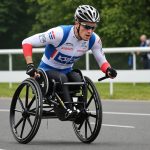Importance of Yoga in Hamstring Injury Recovery
When it comes to athletic rehabilitation for a hamstring injury, yoga stands out as a powerful tool. Incorporating yoga into recovery routines can significantly enhance flexibility and muscle recovery. Yoga aids in gradually stretching and strengthening muscles, crucial for recuperating from hamstring injuries. This gentle yet effective method allows athletes to rebuild their flexibility without overstraining.
Furthermore, yoga offers holistic benefits that extend beyond physical recovery. It promotes mindfulness and mental relaxation, which can be essential for athletes dealing with setbacks due to injury. Stress, often a barrier in athletic recovery, can be managed through calming yoga practices, creating a more positive healing environment.
Have you seen this : Ultimate Guide for Lacrosse Players: Tailoring Training to Dodge ACL Injuries
Recent research underscores the value of yoga in rehabilitation. A study published in the Journal of Sports Rehabilitation highlights that athletes who incorporated yoga into their recovery regimen reported quicker returns to their sport and noticed improvements in their overall flexibility. Several experts in sports medicine advocate for yoga due to its low-impact nature and adaptability, making it suitable for various stages of recovery.
In conclusion, embracing yoga for recovery not only speeds up physical healing but also nurtures mental well-being, making it an integral component in the holistic recovery of hamstring injuries.
In parallel : Effective Strategies for Athletes to Adapt Their Training During Stressful Times
Effective Yoga Poses for Hamstring Recovery
Incorporating Yoga Sequences into your routine can significantly aid in hamstring recovery, especially for injured athletes seeking gentle yet effective rehabilitation. Among these sequences, specific Hamstring Recovery Poses are invaluable.
Forward Bend
The Forward Bend is a cornerstone for enhancing hamstring flexibility. It helps lengthen the hamstrings while also promoting relaxation. Those with different flexibility levels can adapt this pose by slightly bending the knees or using a yoga block for support. This ensures safety and maximises benefit without overstraining the injured muscles.
Hamstring Stretch
The Hamstring Stretch requires meticulous attention to body alignment. Start by lying on your back, and gently lift one leg, keeping it straight. Use a strap around the foot to maintain proper posture. This technique isolates the hamstrings, allowing for focused stretching which is pivotal in a safe recovery process. Ensure that the lower back remains grounded to prevent strain and encourage a functional stretch.
Downward-Facing Dog
The Downward-Facing Dog is not only invigorating but also crucial in the injured athlete poses repertoire. This position enhances blood circulation while gently extending the hamstrings and calves. Incorporate slight knee bends if discomfort arises, enabling a progressive, pain-free transition to fuller engagement as recovery advances.
Sample Yoga Sequences for Recovery
When it comes to recovering from an injury or fatigue, Yoga Sequences for Recovery offer a rejuvenating path back to wellness. Below, we’ve outlined diverse sequences aimed at rehabilitation and healing.
Gentle Flow Sequence
This sequence prioritises gentle movement, appropriate for those beginning their recovery journey. Targeting flexibility, it focuses on avoiding stress on the body. Ideal for hamstring recovery, it incorporates slow transitions between postures, enhancing mobility. Recommended practice is 20-30 minutes, three times per week.
Restorative Yoga Sequence
A Restorative Yoga Sequence excels in deep healing, using props like blocks and bolsters to support passive stretches. Poses are held for longer, up to 5 minutes, to encourage complete relaxation and muscle release. Practicing 2-3 times weekly can significantly aid injury rehabilitation. Modifications ensure accessibility for all skill levels, from beginners to advanced practitioners.
Integrative Sequence for Athletes
Designed for athletes, this Integrative Sequence blends various styles to support rigorous training routines. Emphasising strength and flexibility, it incorporates dynamic postures and deep stretches. Recommended duration is 30 minutes, focusing on proper alignment to protect against injury exacerbation. Athletes can tailor this routine to accommodate different injury severities, ensuring effective recovery while maintaining fitness levels.
Best Practices and Tips for Practicing Yoga During Recovery
Engaging in safe yoga practices during recovery is vital for athletes who aim to heal effectively while maintaining fitness. A highly recommended approach is to consistently listen to your body and acknowledge any physical limits. This practice ensures that each session benefits overall health without risking further injury. Understanding when to push forward and when to take a step back is crucial for a successful recovery journey.
Creating a calming environment is an equally important element of yoga for athletes. Lighting candles or using calming essential oils like lavender can help signal to the body that it’s time to unwind. This state of relaxation is conducive to recovery, allowing both the mind and body to release tension and stress.
Combining yoga with other recovery methods can also be highly beneficial. Techniques such as foam rolling, massage, or hydrotherapy can complement your yoga practice, providing a holistic approach to recovery. Carefully integrating these methods can enhance flexibility, reduce soreness, and accelerate the healing process.
By incorporating these practices, athletes can support their body’s natural healing abilities while ensuring their workouts remain safe and effective. Remember, the goal is a balanced recovery journey that nurtures both the body and mind.
Contraindications and Precautions
When engaging in yoga, understanding injury awareness and ensuring a safe practice is critical. Yoga can be tremendously beneficial, yet it requires certain precautions to avoid exacerbating injuries. It’s essential to recognize individual limitations and act accordingly to maintain safety during practice.
Signs to Stop Practicing
For those recovering from an injury, being aware of signs indicating when to stop is vital. If unusual pain or discomfort arises, cease the activity immediately. Feeling a sharp or shooting pain is a clear signal that the body may be overstretched or strained. The aim is to nurture healing, not hinder it.
Common Mistakes to Avoid
Novices often make errors that can lead to setbacks in recovery, especially when handling hamstring injuries. Avoid forcing stretches beyond comfort levels, as this can aggravate existing injuries. Maintain a conscious awareness of the body’s limits at all times. Overworking oneself in the pursuit of rapid progress often leads to counterproductive outcomes.
Modifications for Different Skill Levels
Tailor the yoga practice to suit individual skill levels by incorporating modifications. Beginners should seek less intense versions of poses, ensuring movements suit their current condition. Adjust routines to accommodate injury specifics, allowing a safer progression in yoga. Prioritise comfort and control over achieving challenging postures to facilitate a positive and effective yoga journey.
Incorporating Yoga into a Comprehensive Recovery Plan
In a holistic recovery approach, integration is key. Combining yoga with physical therapy and strength training optimises the healing process. Yoga complements traditional recovery methods by enhancing flexibility, balance, and mindfulness. It aids in reducing stress and promotes mental well-being, offering a well-rounded recovery experience.
When creating a balanced recovery schedule, including various modalities like yoga and cross-training can be particularly beneficial. Start with physical therapy sessions focused on specific injuries. Supplement these with yoga to improve range of motion and enhance muscle relaxation. Strength training can then be added to build resilience and prevent future injuries.
Cross-training ensures different muscle groups are engaged, reducing overuse risks. Include yoga sessions focusing on deep breathing and meditation to alleviate anxiety and increase concentration, essential for healing.
Learning from others can be encouraging. Many athletes have successfully embraced a recovery integration approach, witnessing great success. For instance, marathon runners and soccer players often report faster recovery times when incorporating yoga. This multi-faceted recovery approach allows them to manage both physical and mental aspects effectively, leading to a quicker return to their sport.
By effectively integrating these elements, individuals can cultivate a robust recovery, enhancing overall well-being.











